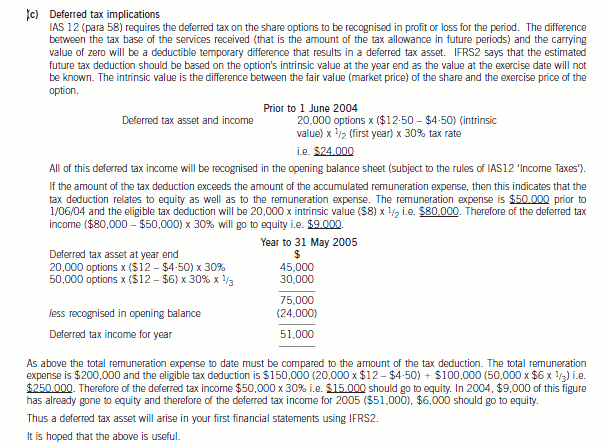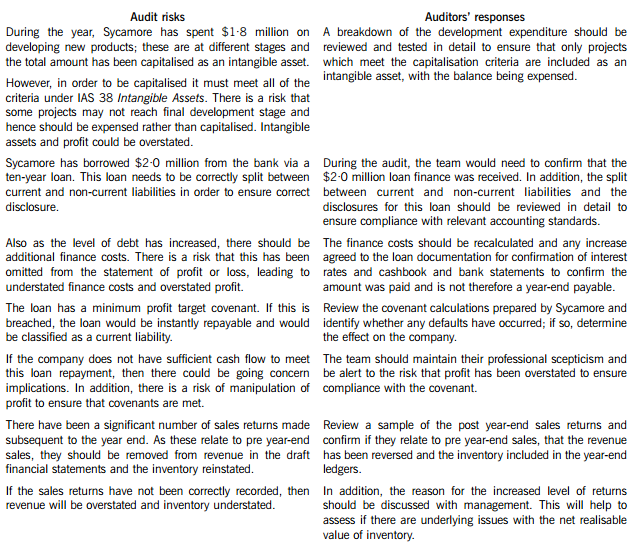ACCA报名条件你都符合吗?
发布时间:2021-06-27
你适合报考ACCA吗?你符合报名条件吗?为什么要报考ACCA,考取ACCA证书有什么用?关于这些问题,今天51题库考试学习网就来给大家解答一下,快一起来看看吧!
ACCA报名条件:
报名注册ACCA考试的学员,需具备以下条件之一:
1.教育部认可的高等院校在校生(本科在校),顺利完成大一的所有课程考试,即可报名。
2.具有教育部承认的大专以上学历 。
3.不符合1、2项报名条件的申请者,也可以先申请参加FIA(Foundations in Accountancy)基础财务资格考试。完成ACCA基础职业模块、基础商业会计(FAB)、基础管理会计(FMA)、基础财务会计(FFA)3门课程后,可获得ACCA商业会计师资格证书(Diploma in Accounting and Business),获得资格证书后可豁免ACCAF1-F3三门课程的考试,直接参加技能课程的考试。
能报考ACCA的人群:
1. 高中毕业生,你可能纳闷,高中毕业生只有高中文凭也可以报考ACCA吗?没错,是可以的,但前提是要在报考前申请参加FIA考试,考试通过后,就可直接进入到技能课程考试阶段。
2. 在校大学生,凡是教育部认可的高等院校在校生(本科在校),顺利完成大一的课程考试,即可报名成为ACCA的正式学员。
3. 企业管理者,这里需要提醒大家,作为企业高管,责任重大,不仅仅要为公司的大事小情操心,还要对自己的决策负责。报考前考虑好个人情况工作时间,再决定备考多久,什么时候报考。
考ACCA的原因
ACCA被称为"国际财会界的通行证"。其会员资格得到欧盟立法以及全球众多国家公司法的承认,与全球19个会计师组织有互免互认协议。
据ACCA官方调查数据显示,ACCA会员目前在中国的年薪分布在30万~200万不等,在中国超过75%的ACCA会员在入职三年获得岗位晋升。ACCA资格不仅财会内容覆盖全面,还将公司管理、战略决策和职业道德融入其中。 在攻读ACCA资格的同时,还可以考取其他资格证书,其中包括由牛津布鲁克斯大学(Oxford Brookes University)颁发的应用会计理科学士学位以及由伦敦大学(University of London)颁发的专业会计硕士学位。除此之外,如果需要在英语技能方面获得额外的帮助,英国BPP大学将为ACCA学员提供英语培训课程。
以上就是整篇文章的全部内容了,希望对大家有所帮助,准备报考2021年ACCA考试的考生,记得提前准备好相关材料。最后,51题库考试学习网祝愿各位考生都能顺利通过考试。
下面小编为大家准备了 ACCA考试 的相关考题,供大家学习参考。
(ii) Identify and explain the principal audit procedures to be performed on the valuation of the investment
properties. (6 marks)
(ii) Additional audit procedures
Audit procedures should focus on the appraisal of the work of the expert valuer. Procedures could include the following:
– Inspection of the written instructions provided by Poppy Co to the valuer, which should include matters such as
the objective and scope of the valuer’s work, the extent of the valuer’s access to relevant records and files, and
clarification of the intended use by the auditor of their work.
– Evaluation, using the valuation report, that any assumptions used by the valuer are in line with the auditor’s
knowledge and understanding of Poppy Co. Any documentation supporting assumptions used by the valuer should
be reviewed for consistency with the auditor’s business understanding, and also for consistency with any other
audit evidence.
– Assessment of the methodology used to arrive at the fair value and confirmation that the method is consistent with
that required by IAS 40.
– The auditor should confirm, using the valuation report, that a consistent method has been used to value each
property.
– It should also be confirmed that the date of the valuation report is reasonably close to the year end of Poppy Co.
– Physical inspection of the investment properties to determine the physical condition of the properties supports the
valuation.
– Inspect the purchase documentation of each investment property to ascertain the cost of each building. As the
properties were acquired during this accounting period, it would be reasonable to expect that the fair value at the
year end is not substantially different to the purchase price. Any significant increase or decrease in value should
alert the auditor to possible misstatement, and lead to further audit procedures.
– Review of forecasts of rental income from the properties – supporting evidence of the valuation.
– Subsequent events should be monitored for any additional evidence provided on the valuation of the properties.
For example, the sale of an investment property shortly after the year end may provide additional evidence relating
to the fair value measurement.
– Obtain a management representation regarding the reasonableness of any significant assumptions, where relevant,
to fair value measurements or disclosures.
(c) the deferred tax implications (with suitable calculations) for the company which arise from the recognition
of a remuneration expense for the directors’ share options. (7 marks)

You are the audit supervisor of Maple & Co and are currently planning the audit of an existing client, Sycamore Science Co (Sycamore), whose year end was 30 April 2015. Sycamore is a pharmaceutical company, which manufactures and supplies a wide range of medical supplies. The draft financial statements show revenue of $35·6 million and profit before tax of $5·9 million.
Sycamore’s previous finance director left the company in December 2014 after it was discovered that he had been claiming fraudulent expenses from the company for a significant period of time. A new finance director was appointed in January 2015 who was previously a financial controller of a bank, and she has expressed surprise that Maple & Co had not uncovered the fraud during last year’s audit.
During the year Sycamore has spent $1·8 million on developing several new products. These projects are at different stages of development and the draft financial statements show the full amount of $1·8 million within intangible assets. In order to fund this development, $2·0 million was borrowed from the bank and is due for repayment over a ten-year period. The bank has attached minimum profit targets as part of the loan covenants.
The new finance director has informed the audit partner that since the year end there has been an increased number of sales returns and that in the month of May over $0·5 million of goods sold in April were returned.
Maple & Co attended the year-end inventory count at Sycamore’s warehouse. The auditor present raised concerns that during the count there were movements of goods in and out the warehouse and this process did not seem well controlled.
During the year, a review of plant and equipment in the factory was undertaken and surplus plant was sold, resulting in a profit on disposal of $210,000.
Required:
(a) State Maples & Co’s responsibilities in relation to the prevention and detection of fraud and error. (4 marks)
(b) Describe SIX audit risks, and explain the auditor’s response to each risk, in planning the audit of Sycamore Science Co. (12 marks)
(c) Sycamore’s new finance director has read about review engagements and is interested in the possibility of Maple & Co undertaking these in the future. However, she is unsure how these engagements differ from an external audit and how much assurance would be gained from this type of engagement.
Required:
(i) Explain the purpose of review engagements and how these differ from external audits; and (2 marks)
(ii) Describe the level of assurance provided by external audits and review engagements. (2 marks)
(a) Fraud responsibility
Maple & Co must conduct an audit in accordance with ISA 240 The Auditor’s Responsibilities Relating to Fraud in an Audit of Financial Statements and are responsible for obtaining reasonable assurance that the financial statements taken as a whole are free from material misstatement, whether caused by fraud or error.
In order to fulfil this responsibility, Maple & Co is required to identify and assess the risks of material misstatement of the financial statements due to fraud.
They need to obtain sufficient appropriate audit evidence regarding the assessed risks of material misstatement due to fraud, through designing and implementing appropriate responses. In addition, Maple & Co must respond appropriately to fraud or suspected fraud identified during the audit.
When obtaining reasonable assurance, Maple & Co is responsible for maintaining professional scepticism throughout the audit, considering the potential for management override of controls and recognising the fact that audit procedures which are effective in detecting error may not be effective in detecting fraud.
To ensure that the whole engagement team is aware of the risks and responsibilities for fraud and error, ISAs require that a discussion is held within the team. For members not present at the meeting, Sycamore’s audit engagement partner should determine which matters are to be communicated to them.
(b) Audit risks and auditors’ responses



(c) (i) Review engagements
Review engagements are often undertaken as an alternative to an audit, and involve a practitioner reviewing financial data, such as six-monthly figures. This would involve the practitioner undertaking procedures to state whether anything has come to their attention which causes the practitioner to believe that the financial data is not in accordance with the financial reporting framework.
A review engagement differs to an external audit in that the procedures undertaken are not nearly as comprehensive as those in an audit, with procedures such as analytical review and enquiry used extensively. In addition, the practitioner does not need to comply with ISAs as these only relate to external audits.
(ii) Levels of assurance
The level of assurance provided by audit and review engagements is as follows:
External audit – A high but not absolute level of assurance is provided, this is known as reasonable assurance. This provides comfort that the financial statements present fairly in all material respects (or are true and fair) and are free of material misstatements.
Review engagements – where an opinion is being provided, the practitioner gathers sufficient evidence to be satisfied that the subject matter is plausible; in this case negative assurance is given whereby the practitioner confirms that nothing has come to their attention which indicates that the subject matter contains material misstatements.
声明:本文内容由互联网用户自发贡献自行上传,本网站不拥有所有权,未作人工编辑处理,也不承担相关法律责任。如果您发现有涉嫌版权的内容,欢迎发送邮件至:contact@51tk.com 进行举报,并提供相关证据,工作人员会在5个工作日内联系你,一经查实,本站将立刻删除涉嫌侵权内容。
- 2020-02-26
- 2020-02-22
- 2020-01-10
- 2019-01-06
- 2020-01-10
- 2020-01-10
- 2019-01-17
- 2020-04-28
- 2020-01-09
- 2020-01-09
- 2020-01-09
- 2020-04-08
- 2020-01-10
- 2020-01-09
- 2020-01-03
- 2019-01-06
- 2020-02-22
- 2019-01-17
- 2020-01-10
- 2020-01-10
- 2020-02-23
- 2020-01-09
- 2020-04-11
- 2020-01-10
- 2020-02-26
- 2020-01-09
- 2019-01-06
- 2020-01-09
- 2020-04-23
- 2020-02-23